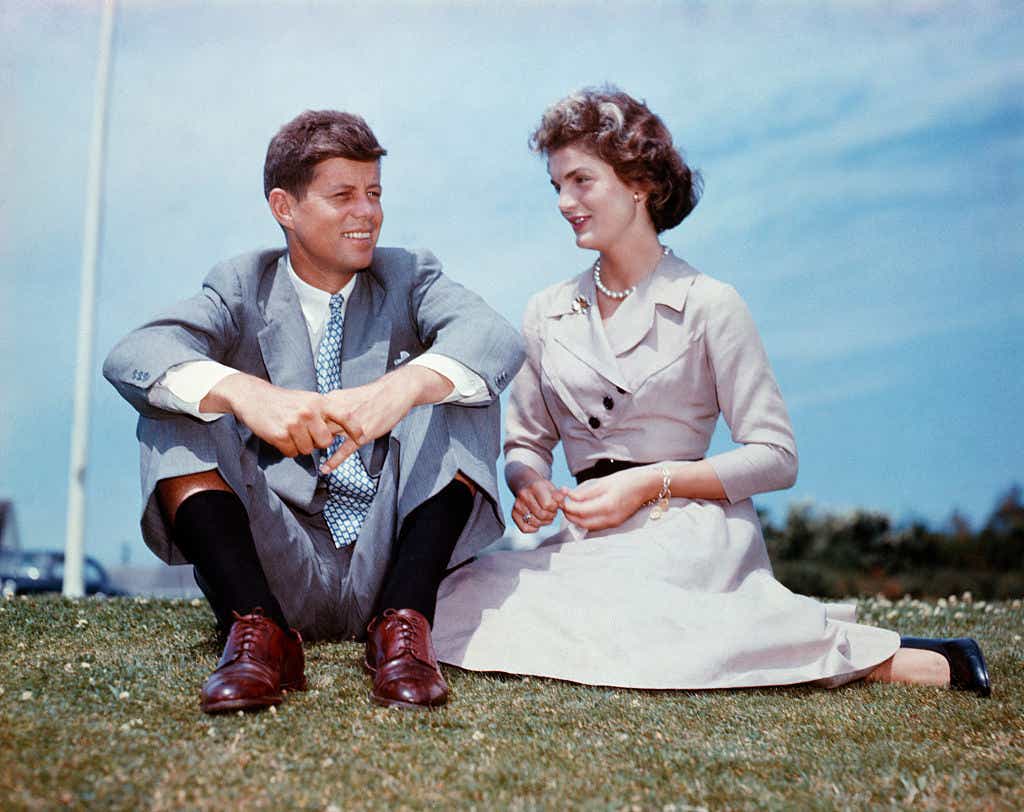John F. Kennedy may only have served as President of the United States for 1,036 days, but his legacy looms larger than many other commanders-in-chief who served full terms — and even 58 years since his life was cut tragically short, there’s still fascinating insight to be mined about his lived experience.
Kennedy’s time in the Oval Office takes center stage with vivid detail in the new book Incomparable Grace: JFK in the Presidency, which was published April 26. Author Mark K. Updegrove, a presidential historian for ABC News and head of the LBJ Foundation, paints a riveting portrait of the county’s 35th leader, and there’s lots to unpack for Camelot obsessives.
The book touches on all the biggest stories of JFK’s term, including the Bay of Pigs Invasion, his relations with the Soviet Union, and his shocking assassination at the hands of Lee Harvey Oswald in 1963. It also investigates one of the most titillating parts of his life — his notorious philandering.
Updegrove writes about Kennedy’s reputation as a “rampant and reckless womanizer,” and while his charisma, charm, and famous good looks certainly had something to do with it, he was also following the lead of his family.
"In the hypercompetitive, testosterone‐infused Kennedy family, unbridled womanizing seemed as much about keeping score as it did the thrill of the conquest," Updegrove writes in the book.
Kennedy had an early example in this type of behavior from his influential father Joseph P. Kennedy Sr., a prominent businessman and one time United States Ambassador to the United Kingdom. The patriarch was married to JFK’s mother, Rose Fitzgerald Kennedy, from 1914 until his death in 1969, and together they parented nine children. But he was notoriously unfaithful, and his affairs included one with the actress Gloria Swanson.
Incomparable Grace explains the ways in which JFK’s own unfaithfulness was encouraged by his powerful position, his influential associates, and even treatments for the chronic back pain he suffered with throughout his life.
"His sexual appetite was ramped up by daily cortisone shots for his back, and was fed all too readily by friends and acolytes eager to indulge him by finding willing partners: socialites, movie stars, White House secretaries and interns, and high‐end prostitutes — anyone would do," Updegrove writes.
The book also explores the obvious next question that Kennedy followers have obsessively asked for decades: Did his wife know? Updegrove’s research concludes that First Lady Jacqueline Kennedy was, in fact, aware of her husband’s affairs, and that she “accepted” them as part of her life, though the public knowledge of his improprieties was difficult on her emotionally.
The grace and poise that Jackie exhibited in the face of personal challenges like those and the adversity of living such a public life was one of the things JFK loved about her. And though she wasn’t political in her own right, she did contribute significantly to the glamorous image that became such a valuable asset for Kennedy.
One prominent example is her 1962 televised tour of the White House. In discussing the 60th anniversary of that event, Kennedy historian Barbara A. Perry described to KCM how Jackie’s work buoyed JFK’s presidency.
“Many more thousands of people were coming to the White House. They were enamored of him and Mrs. Kennedy and wanted to see what she was doing because it was so well-publicized in Life magazine and then in the television tour,” Perry explained.
In Incomparable Grace, Updegrove says that the future seemed infinitely bright for the Kennedys when they traveled to Texas in 1963 for the visit where the president’s life would come to an end. After JFK had been shot, Updegrove writes, Jackie rushed with him to the hospital, where she "remained by his side to the last, her eyes never leaving his."









